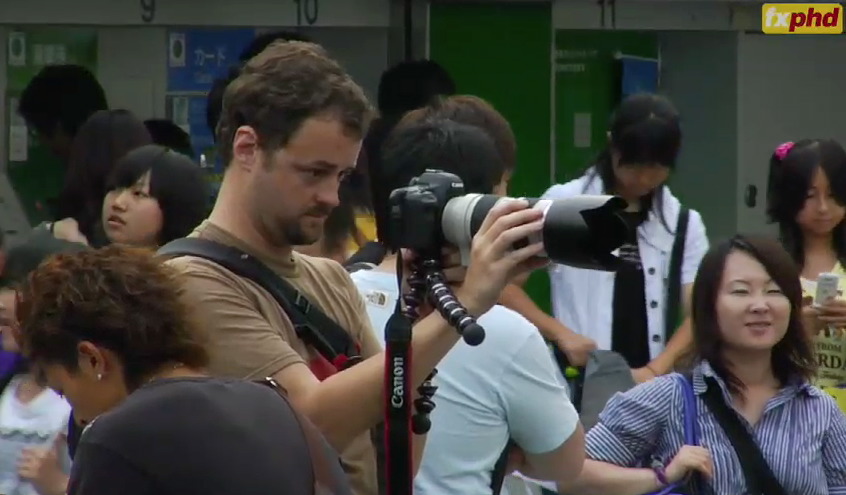Passing the Linear Torch
 Wednesday, September 30, 2009 at 1:38AM
Wednesday, September 30, 2009 at 1:38AM  I used to show you weird crap like this all the time
I used to show you weird crap like this all the time
Back in the day I blogged a lot about how compositing and rendering computer graphics in “linear light.” a color space in which pixel values equate to light intensities, can produce more realistic results, cure some artifacts, and eliminate the need for clever hacks to emulate natural phenomena. Along with Brendan Bolles, who worked with me at The Orphanage at the time, I created eLin, a system of plug-ins that allowed linear-light compositing in Adobe After Effects 6 (at the mild expense of your sanity). I also created macros for using the eLin color model in Shake and Fusion. Along the way I evangelized an end to the use of the term linear to describe images with a baked-in gamma correction.
Then Adobe released After Effects 7.0, which for the first time featured a 32-bit floating point mode, along with the beginnings of ICC color management, which could be used to semi-automate a linear-light workflow. The process was not exactly self-explanatory though, so I wrote a series of articles (1, 2, 3, 4, 5, 6) on how one might go about it.
Then I rambled endlessly on fxguide about this, and in the processes managed to cast a geek spell on Mike Seymour and John Montgomery, who republished my articles on their fine site with my blessing.
This week Mike interviewed Håkan “MasterZap” Andersson of Mental Images about the state of linear workflows today on that same fxguide podcast.
Which is so very awesome, because I don’t want to talk about it anymore.
It’s just no fun going around telling people “Oh, so you put one layer over another in After Effects? Yeah, you’re doing it wrong.” Or “Oh, you launched your 3D application and rendered a teapot? Yeah, you’re totally doing it wrong.”
You are doing it wrong. And I spent a good few years trying to explain why. But now I don’t have to, because Mike and MasterZap had a great conversation about it, and nailed it, and despite the nice things they said about ProLost you should listen to their chat instead of reading my crusty old posts on the subject.
Because it has gotten much, much simpler since then.
For example, there’s Nuke. Nuke makes it hard to do anything but work in linear color space. Brings a tear to my eye.
And the color management stuff in After Effects has matured to the point that its nearly usable by mortal men.
Since I’ve seen a lot of recent traffic on those crusty old posts, here’s my linear-light swan song: a super brief update on how to do it in AE CS4:
In your Project Settings, select 32 bpc mode, choose sRGB as your color space, and check the Linearize Working Space option:
When importing video footage, use the Color Management tab in Interpret Footage > Main to assign a color profile of sRGB to your footage:
Composite your brains out (not pictured).
When rendering to a video-space file, use the Color Management tab in your Output Module Settings to convert to sRGB on render:

That’s the how. For the why, well, those crusty old articles could possibly help with that, especially this one on color correction in linear float, and this one on when not to use linear color space. Part 6 is still pretty much accurate in describing how to extract a linear HDR image from a single raw file using Adobe Camera Raw importer in After Effects, and this article covers the basics fairly well, although you should ignore all the specifics about the Cineon Emulation mode, which never should have existed. This little bit of evangelism is still a good read.
But the ultimate why answer is, and has been for a while now, within the pages of a book you should have anyway: Adobe After Effects CS4 Visual Effects and Compositing Studio Techniques (deep breath). Brendan Bolles guest-authored a chapter on linear light workflow, and not only does he explain it well, he gives many visual examples. And unlike me, Mark keeps his book up-to-date, so Brendan’s evergreen concepts are linked directly to the recent innovations in After Effects’s color manglement.
OK, that’s it. Let us never speak of this again.
 Stu
Stu
I can’t believe I wrote all that without once linking to the official Adobe whitepaper on Color Managed workflows in Adobe After Effects CS4. It’s a great write-up, super detailed, and accurate in every way. Further proof that my work here is done.









